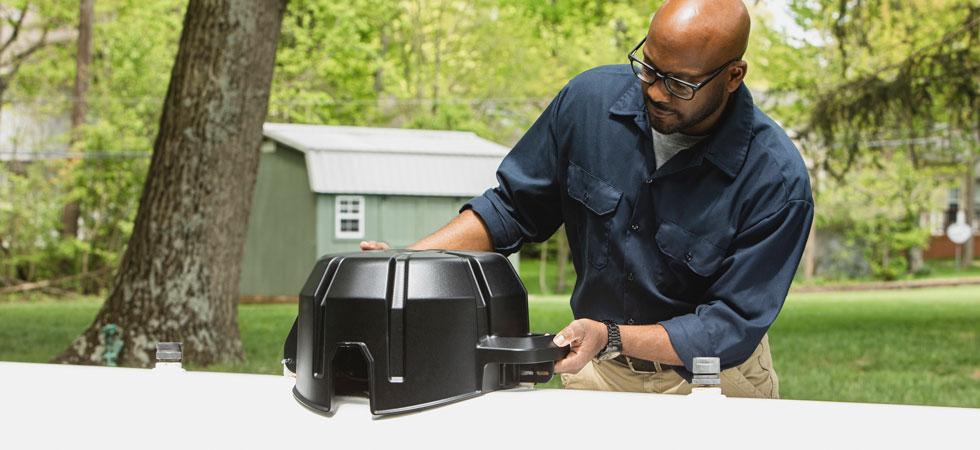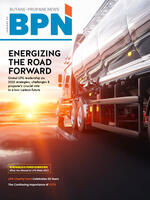
 In today’s market, remote tank monitoring is considered common practice for most liquified petroleum gas (LPG) marketers. While the technology has made companies more efficient in managing fleets, deploying technicians and servicing customers, installation and reliability have been the biggest hurdles to full-scale implementation.
In today’s market, remote tank monitoring is considered common practice for most liquified petroleum gas (LPG) marketers. While the technology has made companies more efficient in managing fleets, deploying technicians and servicing customers, installation and reliability have been the biggest hurdles to full-scale implementation.
Those hurdles caught the attention of Worthington Industries, a United States-based manufacturer of pressure cylinders. “The company has always had a focus on customer success,” said Mark Komlosi, director of sales for the heating, cooling and construction business. “We’re a people-first company, from our employees to our customers. We value the decades-long relationships we have developed in the industry, which also foster great collaboration.”
Worthington partnered with Montreal-based Otodata, a remote tank monitoring provider, to collaborate on developing an easier and more reliable solution for LPG marketers. The idea was first uncovered from customer feedback.
“We heard from a number of LPG marketers who were early-adopters of remote monitoring technology that they needed a monitor that was both easy to install and had a strong, reliable signal,” said Bobby Weinberg, director of LPG products.
Early generation monitors changed the way companies managed fleets, but as with every new technology, there were areas for improvement. Relying on existing relationships to conduct research, Worthington and Otodata worked to understand the challenges preventing large-scale adoption.
“We met with fuel technicians in the field to get an understanding of what their biggest pain points were with implementing a monitoring system,” said Weinberg.
“We learned that while any monitor had the potential to have a positive impact on their business, the installation process of some monitors in the market created challenges. On top of that, our partners couldn’t always rely on an accurate signal or reading,” he continued.
Worthington’s new product development team and territory managers visited with its customers across North America to gain insight into day-to-day operations. They conducted interviews, observed fuel drops and witnessed what technicians were dealing with in the field.
“We took the time to understand every step a fuel technician takes in their day, in addition to how they were installing monitors,” said Innovation and Design Manager Adam Erwin.
The team asked questions and recorded interviews with photos, video and notes. They took note of things that were working, things that could be improved upon and things that were not sustainable.
Most importantly, they learned that installing remote tank monitoring across a fleet of tanks can be a complex, multi-step process that many times requires additional training and tools. They also learned that suboptimal placement, poor coverage, damage from weather and failing batteries commonly rendered tank monitors ineffective.
All of those pitfalls had the potential to result in costly, unscheduled service trips. That translated to downtime for fleets and a disruption to daily operations. In an already tight labor market, that’s a risk many LPG marketers cannot take.
Armed with insights, Worthington and Otodata went to work to develop a smarter monitoring solution with fuel technicians in mind.
“We wanted to make monitoring better and were very intentional with the design to ensure a simple and quick installation conducive to daily operations,” said Weinberg.
 The team spent several months doing voice-of-the-customer work, designing and prototyping a solution to test in the field. Worthington started with two prototypes, conducting A/B testing with slight variations to the integrated lid.
The team spent several months doing voice-of-the-customer work, designing and prototyping a solution to test in the field. Worthington started with two prototypes, conducting A/B testing with slight variations to the integrated lid.
After a couple of weeks in the field, the team made another trip to customers to understand what worked well and what adjustments could be made to improve upon the design.
“Customer feedback was the crucial step repeated throughout the entire development process,” said Erwin. “We relied on several partners to play a large role in providing feedback to make sure we were solving their needs.”
Worthington knew they had succeeded when customers shared tangible optimization metrics that really moved the needle for their monitoring program.
“We had one customer say they were able to cut down regular stops by about 50%, and another was able to cut out 8-10 deliveries a day with the improvements,” said Weinberg.
This is a testament to the value of collaboration and challenging the status quo. It has also been a great example of how original equipment manufacturers and customers can work together to provide better solutions that can optimize operations and further advance the LPG industry.


